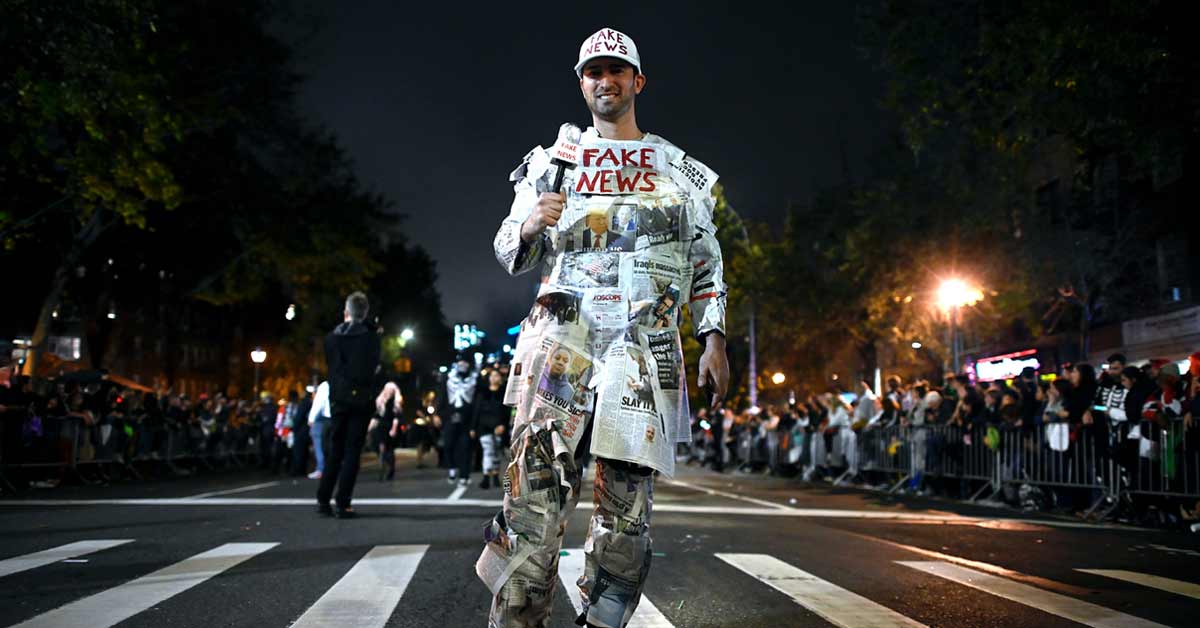After Russia invaded Ukraine, some young Americans created scam Instagram accounts that shared videos and photos about the unfolding events. Pretending to be journalists on the ground, they attracted millions of followers and profited from the ads placed on their pages before they were taken down. It was not an isolated incident; the opportunity to monetize by misleading is the basis of a massive fake news market.
The explosive growth of fake news is one of the most significant consequences of the internet’s expansion. While creators of fake news have a range of motives – from political objectives to satire – the economic factor cannot be overlooked. According to a 2020 study by the Global Disinformation Index (GDI), European fake news sites earn more than US$76 million annually.
Fabricated content on the internet is monetized through a complex, decentralized network that involves actors ranging from major tech companies to small-scale TikTok creators.
To understand how the system works, consider an example from the 2016 presidential election in the United States (US). In the months leading up to the election, young people in the Macedonian village of Veles produced fake news stories promoting the themes and positions of Donald Trump’s campaign. These writers mixed misinformation with real news to persuade readers of their stories’ veracity. They then posted the stories to right-wing websites and generated traffic by linking the stories to social media platforms. As traffic grew, the stories attracted ad placements sold by big tech companies, generating revenue.
By connecting ad placement to traffic, companies like Twitter, Facebook, and Google are facilitators of the fake news market. But they are only part of the overall system. Ad tech companies are responsible for the environment that funds fake news.
In a 2019 study of the US ad tech industry, researchers concluded that the online advertising ecosystem encourages the promotion of fake news through its use of intermediaries. Advertisers rarely know where their ads end up, so major companies like tech firms, airlines, and retailers indirectly fund fake news websites. And the market’s decentralized nature means these brands face no consequences if their ads run on sites that promote misinformation.
PR and marketing firms also play a role in expanding the market by offering money to celebrities to spread fake news. Over the past two years, marketing agencies have sought YouTubers and other social media influencers to spread misinformation about COVID-19, particularly among young people.
Ad blockers can reduce the effect of fake news by limiting the number of people who see a promotion for a fake news story. But growing use of ad blockers also damages legitimate news websites that rely on advertising for revenue.
Much of the fake news market operates behind the scenes, so its overall size is not known with certainty. An analysis by NewsGuard and Comscore estimates that publishers of misinformation earn US$2.6 billion annually from big brands through advertising companies, and the GDI estimated that disinformation websites brought in US$250 million in advertising revenue in 2019.
The easiest way to combat the spread of fake news is to prevent it from generating income. Revcontent, a global leader in online content marketing, has announced that it will demonetize content rated as false by at least two international fact-checking organizations. This kind of intervention will have a more significant impact if it is adopted by big tech companies.
Exposing the networks that sustain this market is another way to confront the problem. The watchdog group Check My Ads has helped to pioneer this approach. Earlier this year, research from Check My Ads led Google to remove some accounts that promoted misinformation about COVID-19 from its AdSense platform. A freely accessible database tracing funding sources would be an important tool in the fight against the misinformation market.
There is a strong argument that governments should tax platforms on the revenue they generate from fake news. But such a plan would be difficult to implement without a compelling definition of the targeted content. And Section 230 of the US Civil Code, which protects online platforms from liability for content published by third-party actors, further complicates the task of regulating the circulation of fake news.
The fake news market depends on the exchange of online attention for money. An effective strategy to combat it must reset this equation. While governments devise legal measures to hold content creators and marketers accountable for disseminating fake news, ordinary people also must take responsibility for their role in spreading misinformation.
The best way to push market-driven companies and influencers to be more engaged with the content they promote is to stop buying what they’re selling.

